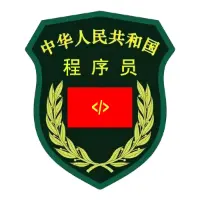在C++中加载和卸载DLL是一件很容易的事,LoadLibrary和FreeLibrary让你能够轻易的在程序中加载DLL,然后在任何地方卸载。在C#中我们也能使用Assembly.LoadFile实现动态加载DLL,但是当你试图卸载时,你会很惊讶的发现Assembly没有提供任何卸载的方法。这是由于托管代码的自动垃圾回收机制会做这件事情,所以C#不提供释放资源的函数,一切由垃圾回收来做。
这引发了一个问题,用Assembly加载的DLL可能只在程序结束的时候才会被释放,这也意味着在程序运行期间无法更新被加载的DLL。而这个功能在某些程序设计时是非常必要的,考虑你正在用反射机制写一个查看DLL中所有函数详细信息的程序,程序提供一个菜单让用户可以选择DLL文件,这时就需要让程序能够卸载DLL,否则一旦用户重新得到新版本DLL时,必须要重新启动程序,重新选择加载DLL文件,这样的设计是用户无法忍受的。
C#也提供了实现动态卸载DLL的方法,通过AppDomain来实现。AppDomain是一个独立执行应用程序的环境,当AppDomain被卸载的时候,在该环境中的所有资源也将被回收。关于AppDomain的详细资料参考MSDN。下面是使用AppDomain实现动态卸载DLL的代码:
using System;
using System.Collections.Generic;
using System.Text;
using System.Threading;
using System.Reflection;
namespace UnloadDll
{
class Program
{
static void Main(string[] args)
{
string callingDomainName = AppDomain.CurrentDomain.FriendlyName;//Thread.GetDomain().FriendlyName;
Console.WriteLine(callingDomainName);
AppDomain ad = AppDomain.CreateDomain("DLL Unload test");
ProxyObject obj = (ProxyObject)ad.CreateInstanceFromAndUnwrap(@"UnloadDll.exe", "UnloadDll.ProxyObject");
obj.LoadAssembly();
obj.Invoke("TestDll.Class1", "Test", "It's a test");
AppDomain.Unload(ad);
obj = null;
Console.ReadLine();
}
}
class ProxyObject : MarshalByRefObject
{
Assembly assembly = null;
public void LoadAssembly()
{
assembly = Assembly.LoadFile(@"TestDLL.dll");
}
public bool Invoke(string fullClassName, string methodName, params Object[] args)
{
if(assembly == null)
return false;
Type tp = assembly.GetType(fullClassName);
if (tp == null)
return false;
MethodInfo method = tp.GetMethod(methodName);
if (method == null)
return false;
Object obj = Activator.CreateInstance(tp);
method.Invoke(obj, args);
return true;
}
}
}
